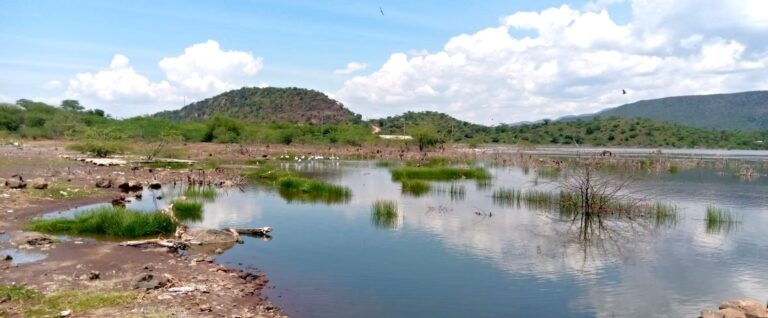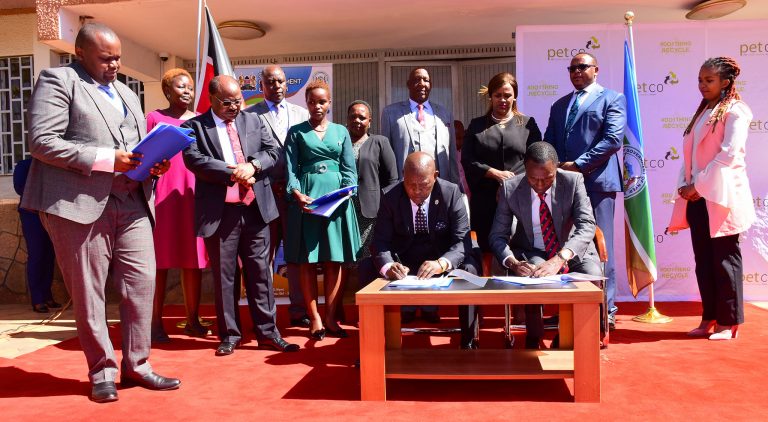By Kimuri Mwangi
There is need to create synergy and have a common ground between various stakeholders dealing with restoring and sustaining Kenya’s landscapes.
This was the common message during the Kenya Landscapes Actors Platform 2024 Conference held in Nairobi, Kenya and organized by Kenya Landscape Actors Platform (KenLAP). KenLAP is a not-for-profit platform affiliated to the Kenya Ministry of Environment, Climate Change and Forestry. Its drive is to coordinate landscape actors in Kenya to work together for productive and resilient landscapes to secure food, biodiversity, equitable livelihoods, and sustainable investments.

“This calls for us working together, where each stakeholder contributes, from a unique perspective, based on our strengths and specialities, towards a shared vision. The communities in the various landscapes may not know each other, but their actions or inactions has an impact on each other. Because of this complexity we have to acknowledge that no single organization or stakeholder can fix the challenges affecting the integrity of our landscapes,” said Dr Michael Okoti a Chief Research Scientist and a Director at the National Agricultural Research Laboratories of the Kenya Agricultural and Livestock Research Organization (KALRO) Kabete.
Dr Okoti added that we have to acknowledge that our landscapes are vast and complex systems. These include forest ecosystems, our vast rangelands, farmlands, water bodies and mountain ecosystems. This diversity and inter-connectedness accrue to us a lot of benefits – economic, social, cultural, natural, aesthetic among others. We derive our livelihoods from these diverse and interconnected ecosystems.
Some earnings for Kenya in 2023 from landscapes include: Kshs 352.5 billion from tourism (USD 2.7 billion), Kshs 526 billion from Agriculture (USD 4.1 billion)- Kenya’s landscapes contributing most of it, Kenyan mangroves (60,000 ha) have an estimated value of Kshs 270,000/Ha/year (USD 2,100).
The Total Economic Value for Mau, Cherangany and Mt. Elgon ecosystems is Kshs 350 billion/year (USD 2.6 billion. They produce timber & non-timber, food and water). They also help in regulating water flow, water quality, Carbon sequestration, Oxygen generation and Microclimatic regulation. They also support soil conservation, nutrient conservation and pollination). The ecosystems also bequeath cultural and spiritual value to the communities around them.
“If we miss our landscape then we have lost everything that we can hold on to as humanity. This interconnection between the various landscapes also makes it very critical for all the stakeholders to talk to each other. Remember for example what we do in the agriculture sector, the agricultural landscapes, affects the aquatic landscapes. If we have a lot of soil erosion in the Mount Kenya region, a lot of sediments are carried down to the ocean and that affects the fishing industry, the ocean because of water turbidity and also because of the nutrient sediment in the water. So, we want to see that each and every landscape is well managed for the sake of the other landscape. That interconnectedness needs to be maintained,” opined Dr Okoti.
Despite the contribution of our landscapes, Kenya faces several challenges in upholding their integrity. These challenges include:
- Multiplicity of drivers of degradation – the need to address more than one driver of degradation, which can require different strategies – poverty, upstream activities, climatic changes
- Unsustainable land use practices – At one time the country was losing 12,000 hectares of forest annually
- Issues related to land rights and tenure;
- Financial constraints due to the expensive nature of landscape management;
- Policy and legislative frameworks: Inadequate policy and legislation can hinder restoration efforts.
- Limited human and technical capacity, in some instances.
- Limited monitoring and reporting – tracking intervention impacts – how to monitor across spatial and time scales
- Declining plant and animal biodiversity
- Lack of coordination and coherence among institutions and insufficient collaboration and coordination among diverse stakeholders at the landscape level.
To address these constraints, several sectoral policies have been put in place focusing on soil management, forestry including agroforestry, agriculture, aquatic landscapes, the ASALs, carbon trading policy, land laws and energy generation among others but on the same landscape.

Marion Ng’ang’a the Rainforest Alliance Country Director in charge of Kenya and Tanzania agreed that collaboration is needed for meaningful impact to be felt. “On landscape finance we realise that no single entity can harness the resources that are required to transform a landscape therefore we are collaborating with different actors from county and national governments, donor organisation, the private sector towards mobilising integrated finance through the landscape management board that is required to support the farmers and forest communities to transition to net positive,” she quipped.
The organisation works at the intersection of agriculture and forestry to make responsible business the new normal through a certification programme. They have a standard called sustainable agriculture standard and also through implementation of landscapes and communities projects and programmes. Through the certification programme they look at the socio-economic and environmental aspects that revolve around the production of agricultural commodities that are grown in the south but mainly consumed in the global north while implementing landscapes and communities’ projects and programmes through integrated landscape management approach.
“We are breaking the silos and going beyond our certified tea and coffee producers and including everybody else that is within the respective landscapes where we have certified farmers. We are also thought leaders on matters to do with regenerative and climate smart agriculture because it’s only through regeneration that we can save the remaining of the tropical forest in the world where major agricultural commodities are produced but also, we can recreate value and enhance gender equality and inclusion of marginalised groups. Rainforest Alliance is a founding member of the Kenyan National Landscape Actors Platform and we are really keen to learn from others and also to bring everybody in to ensure that together we can achieve sustainable development goals through conservation of our respective landscapes,” added Ng’ang’a.
While commending the governments for putting in place policies and strategies related to conserving the environment, she feels much remains to be done because to achieve true transformation requires collaboration and integrated finance.








